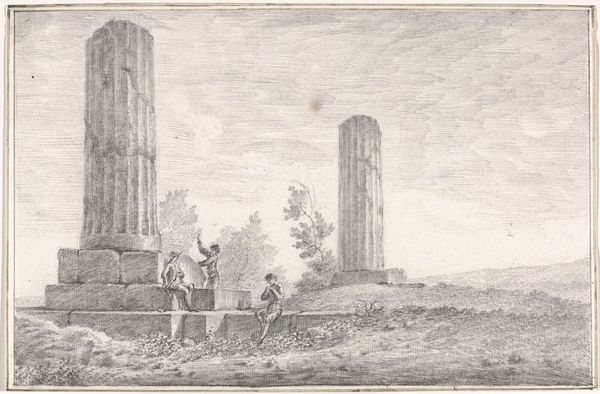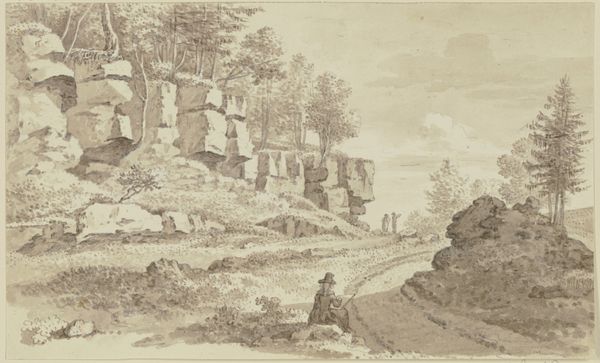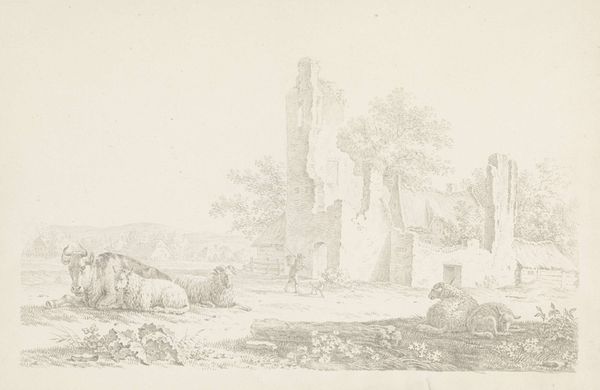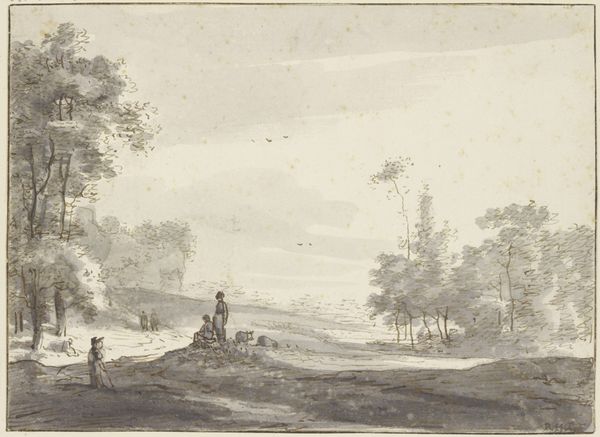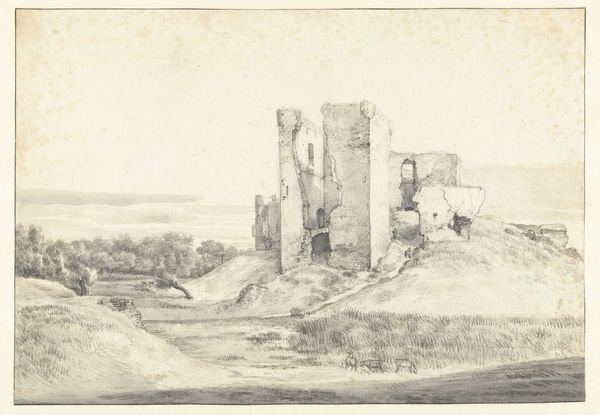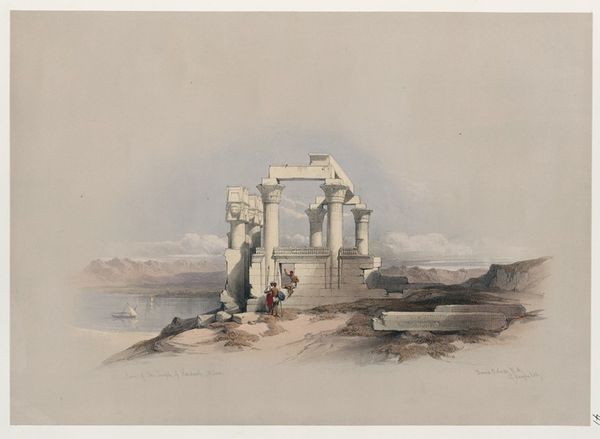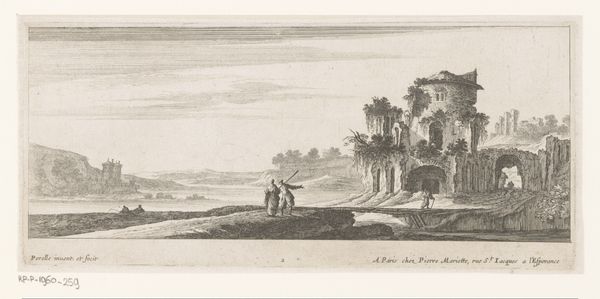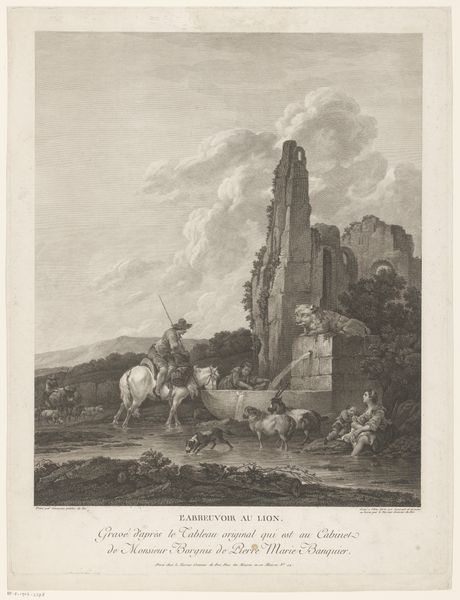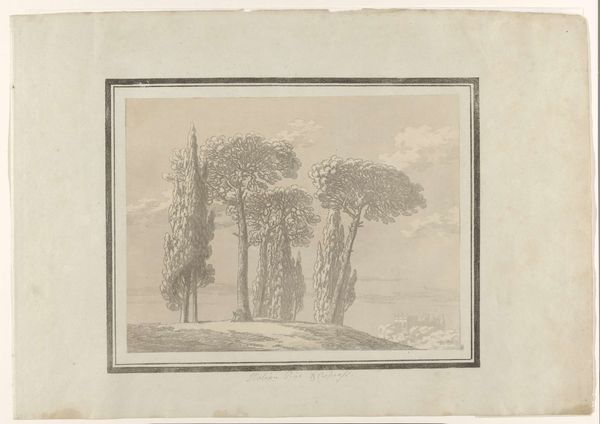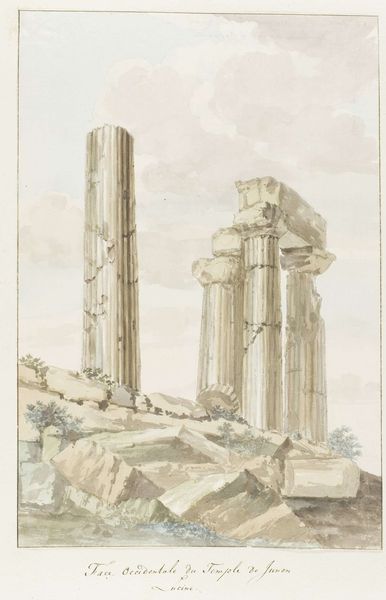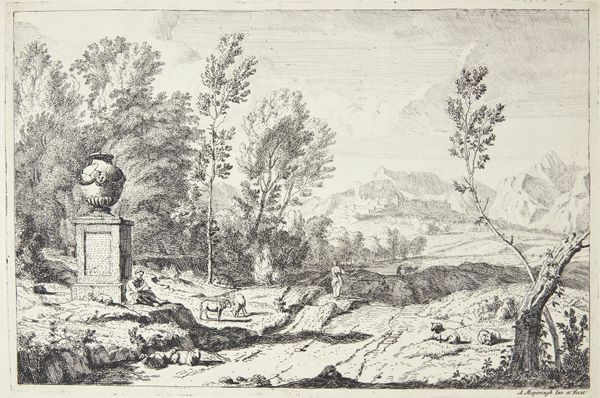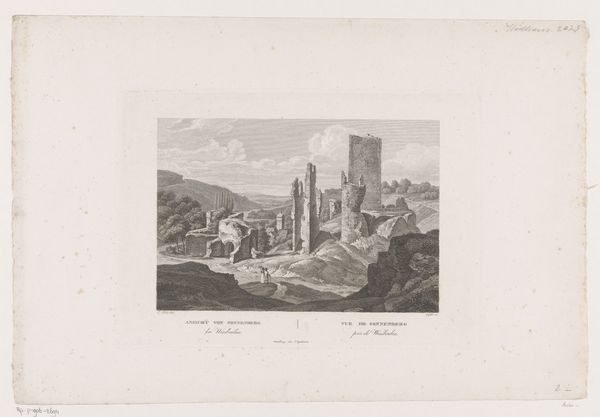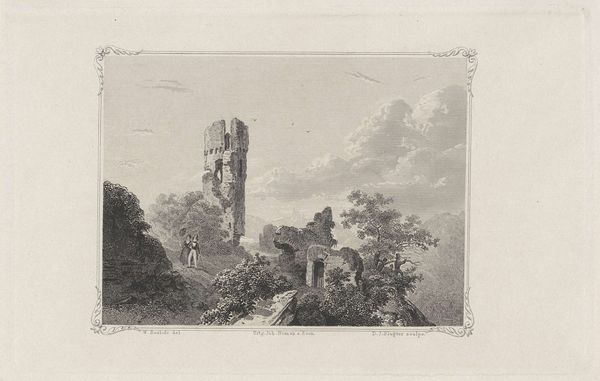
Twee fragmenten van zuilen van de tempel van Zeus Olympus op afstand van halve mijl van rivier Anapus 1778
0:00
0:00
drawing, pencil, architecture
#
architectural sketch
#
landscape illustration sketch
#
drawing
#
neoclacissism
#
landscape
#
ancient-mediterranean
#
pencil
#
architecture
Dimensions: height 333 mm, width 472 mm
Copyright: Rijks Museum: Open Domain
Curator: Here we have Louis Ducros' 1778 drawing, "Twee fragmenten van zuilen van de tempel van Zeus Olympus op afstand van halve mijl van rivier Anapus," a pencil and watercolor landscape now residing at the Rijksmuseum. What are your initial impressions? Editor: A quiet stillness. The light feels like it’s just after dawn. It’s interesting how Ducros focuses on the ruined columns—the labor of their making feels incredibly distant, and there’s a contrast in textures between worked stone and natural foliage that stands out. Curator: Ducros was captivated by antiquity, evident in his focus on the temple ruins. Those fragmented columns evoke themes of lost grandeur and the passage of time, wouldn’t you say? Each fluted line a ghost of former glory. Editor: Indeed, and consider how neoclassical artists like Ducros experienced these classical ruins. It wasn't just about aesthetic appreciation but also a grappling with labor, materials, and process—all implicated in complex power dynamics of production and access in that time. Notice how the man standing by the column suggests both scale, as well as labor practices of antiquity. Curator: Absolutely, he gives a human dimension but also invites reflection on scale. The symbolic weight of the Doric order also feels present – strength, stability. These aren't just structural remains, they're cultural signifiers of an idealized past, made even more evocative with the distant view of a suggestive mountaintop. Editor: But let’s think about Ducros' process here, the materiality of his art, how does the medium—watercolor and pencil on paper—speak to the impermanence he represents in stone? A reflection on the lifespan of materials and labor itself? Curator: A fascinating point. Perhaps Ducros subtly underscores that everything, even stone, succumbs eventually to time. His choice of medium becomes a metaphor, capturing not just what remains, but the idea of the ruin itself. The fragmented state only enhances the symbolic weight, doesn’t it? A meditation on memory. Editor: Yes, seeing this reminds me that our understanding of these ruins is mediated by the very materials and artistic practices used to depict them— watercolor and pencil being relatively portable, easily traded materials that brought classical ideas into domestic spaces, as they circulated through burgeoning art markets. Curator: What a poignant reminder that symbols persist precisely through material means! Editor: Precisely, prompting reflections on societal values and enduring artistic significance, especially about art’s own role as documentation of materials, places and practices now gone.
Comments
No comments
Be the first to comment and join the conversation on the ultimate creative platform.
